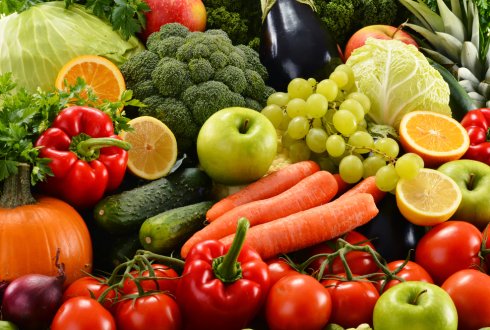Get The Most From Your Fruits and Vegetables
How To Buy, Store, and Prepare Great Fruits and Vegetables.
As we head into the heart of winter its more important than ever to get the most out of our fruit and vegetable purchases. We’ve all heard the mantra to eat more produce, but the reality is that much of the fruits and vegetables we buy in the supermarket are nearly void of any nutrition. Harvesting practices that don’t allow the produce to ripen and long storage and transit times all lead to a loss of vitamins, minerals, and phytonutrients. The following tips can help you make every bit count when it comes to buying and storing your fruit and veggies throughout the year.
How to Buy
- Look for seasonal produce. Watermelon in December might sound great, but it will be far less nutritious than buying it in late summer.
- Be wary of produce sales! Is the fruit or vegetable in season? Does the sale price reflect an abundance of available produce or just old fruit and vegetables that need off the shelf?
- Look for dark, deep, and bright colors. Dark grapes, deep red cabbage, and bright red apples are more nutritious than their lighter-colored counterparts.
- Size matters, but not the way you think. Smaller fruits and vegetables are often more nutritious. Cherry tomatoes, for example, have much higher levels of antioxidants than large beefsteak tomatoes. Small apples will have less sugar and more nutrition compared to a large apple.
- Smell before you buy. A peach should smell like a peach, not cardboard. Fruit without any discernible smell was picked green and will have less nutrition.
How to Store
- Store your produce correctly as soon as you buy it. It’s easy to just stick your newly purchased produce in the vegetable crisper of your fridge, but it will continue to lose valuable nutrients. Take the time to protect what you just bought. Proper storage will also make it much more likely that your produce will not go to waste because you can just reach in a bag and get what you need during the week.
- Store greens, lettuce, and other vegetables by washing and drying them well. Place the dried produce in large plastic storage bags with 15-20 pinholes. This will slow nutritional decline.
How to Prepare
- Steam or lightly sauté your vegetables to maintain their nutrients. Use the liquid from boiling fruit or vegetables as a broth because most of the vegetable’s nutrition is transferred to the leftover boiling water.
- Don’t be afraid to cook your produce. Some vegetables, like tomatoes and cabbage, have higher levels of antioxidants after cooking.
- Be adventurous and eat a wide variety of plants. Many different colors and flavors are healthier than getting stuck on one or two items.
- Join a CSA (community supported agriculture). You are sure to get local, fresh, in-season produce that supports a local farmer.
Resources:
www.ewg.org/foodnews/dirty_dozen_list.php Pesticide contamination in produce.
www.eatwild.com
Optimize nutrition from the produce you buy.
www.kcfoodcircle.org
Local farms and ranches.
www.downtownls.org/farmers-market/ Lee’s Summit Farmers’ market.
www.localharvest.org/
Local farmers markets and CSAs.
www.agebb.missouri.edu/fmktdir/harvest.htm Seasonal produce in Missouri.

